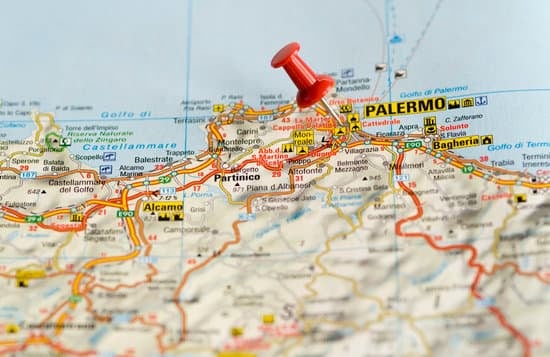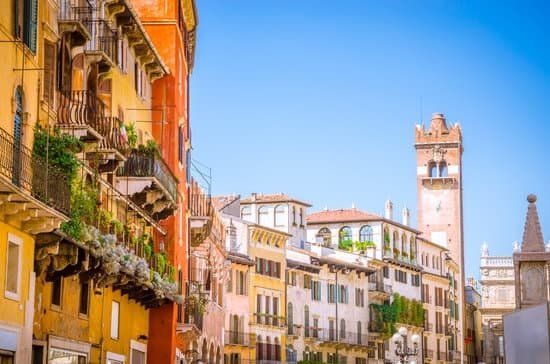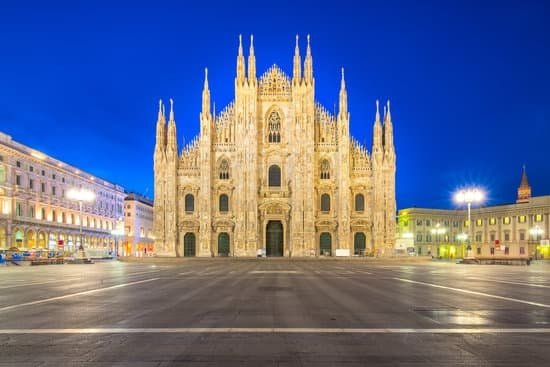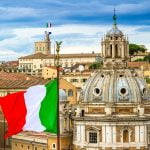Italy is a beloved travel destination, known for its rich history, stunning landscapes, and mouthwatering cuisine. With diverse regions and cities to explore, there is something for everyone in this beautiful country. Whether you’re eager to immerse yourself in the art and romance of Florence or navigate the charming canals of Venice, Italy offers countless unforgettable experiences.
In this article, we will provide must-know tips to enhance your Italy travel experience, including understanding Italian culture and etiquette, essential language phrases, recommended destinations, transportation advice, weather considerations, budgeting tips, safety precautions, and food and drink experiences. Join us on a journey through one of the most popular travel destinations in the world.
Italy’s allure lies in its abundance of captivating attractions and cultural riches across its many regions. From the iconic landmarks of Rome like the Colosseum and Vatican City to the breathtaking coastal views of the Amalfi Coast, there is so much to explore.
The romantic atmosphere and Renaissance art in Florence are a delight for art enthusiasts while wandering through Venice’s canals is a unique experience that shouldn’t be missed. And let’s not forget about the picturesque landscapes and wine tastings in Tuscany’s countryside or immersing in fashion and art scenes in Milan.
To fully appreciate your time in Italy, it’s important to understand Italian culture and etiquette. By knowing dos and don’ts when interacting with locals, respecting dress codes for religious sites or occasions, you can show respect for local customs while avoiding cultural misunderstandings. Additionally, learning some essential Italian phrases will greatly enhance your travel experience – helping you navigate menus with ease and ask for directions confidently.
Embarking on an Italian adventure requires planning your itinerary effectively so that you don’t miss must-visit destinations along the way. Whether you want to uncover iconic landmarks or indulge in regional specialties such as gelato tasting or savoring limoncello on the Amalfi Coast, this article will delve into the best destinations for an unforgettable trip to Italy.
Understanding Italian Culture and Etiquette
When traveling to Italy, it is important to have a basic understanding of Italian culture and etiquette to ensure a smooth and enjoyable experience. Interacting with locals respectfully and adhering to cultural norms will go a long way in creating positive interactions and avoiding any misunderstandings. Here are some dos and don’ts to keep in mind:
Dos:
- Greet with a handshake: When meeting someone for the first time, it is polite to greet them with a firm handshake.
- Use “please” and “thank you”: Italians appreciate politeness, so be sure to use “per favore” (please) and “grazie” (thank you) when interacting with locals.
- Learn basic phrases: Making an effort to learn some basic Italian phrases such as greetings, asking for directions, and ordering food will show respect and goodwill towards the locals.
Don’ts:
- Avoid excessive hand gestures: While Italians are known for their expressive hand gestures, it is best to be mindful of when and how you use them. Excessive gesturing can sometimes be seen as impolite or offensive.
- Dress modestly in religious sites: When visiting churches or other religious sites, it is important to dress appropriately by covering your shoulders and knees out of respect.
- Don’t rush meals: Italians take their meals seriously and view dining as a time for relaxation and socializing. Rushing through a meal or asking for the check immediately after finishing can be seen as impolite.
It’s also worth noting that regional customs may vary within Italy, so being aware of any specific customs or traditions in the area you are visiting can help you navigate cultural differences more effectively. Overall, embracing Italian culture with an open mind and respecting local customs will enhance your travel experience in this beautiful country.
| Italian Customs | Description |
|---|---|
| Siesta | During the afternoon, many businesses and shops may close for a few hours to allow people to rest or spend time with family. |
| Coffee culture | Italians take their coffee seriously and have specific customs when it comes to ordering and enjoying their favorite caffeinated beverages. |
| Punctuality | Italians tend to be more relaxed about timekeeping, so it is common for events or gatherings to start a little later than scheduled. |
| Kissing on the cheek | When greeting friends or acquaintances, Italians often exchange kisses on both cheeks as a friendly gesture. |
Essential Italian Phrases and Language Tips
Italy is a destination known for its rich history, stunning landscapes, and mouthwatering cuisine. While many Italians do speak English, it can be helpful to learn some essential Italian phrases and language tips to enhance your travel experience. Whether you want to navigate menus, order food, or ask for directions, having a basic understanding of the language can go a long way in helping you communicate effectively with locals.
When visiting Italy, it is important to start with the basics of greetings and pleasantries. Learning phrases such as “Buongiorno” (good morning), “Buonasera” (good evening), and “Grazie” (thank you) can show respect and make a good first impression. Additionally, knowing how to say “Parli inglese?” (Do you speak English?) can be useful when seeking assistance from someone who may not be fluent in English.
Navigating menus in Italian restaurants can sometimes be challenging, especially if there are no English translations available. It is helpful to familiarize yourself with common food-related terms such as “antipasto” (appetizer), “primo piatto” (first course), “secondo piatto” (second course), and “dolce” (dessert). Knowing how to ask for popular dishes like pizza or pasta can also come in handy.
In addition to greetings and menu items, knowing how to ask for directions is crucial for getting around Italy’s cities and towns. Phrases such as “Scusi,” meaning excuse me, and “Dov’è” meaning where is followed by the name of the place or landmark you are looking for will allow you to communicate effectively with locals when seeking directions.
Learning these essential Italian phrases will not only help you interact more easily with locals but also demonstrate your effort to embrace the local culture. By making the effort to communicate in the native language, you may find that locals appreciate your attempt and are more willing to assist you during your travels in Italy.
Planning Your Itinerary
Italy is a country filled with incredible destinations, each offering its own unique charm and beauty. When planning your itinerary for a trip to Italy, there are several must-visit destinations that should be at the top of your list.
First and foremost, Rome is an absolute must-see city in Italy. As the capital and one of the most iconic cities in the world, Rome offers a blend of history, art, and culture that is truly unparalleled. Make sure to visit famous landmarks such as the Colosseum, where you can step back in time and imagine ancient gladiator battles. Don’t forget to also explore Vatican City, home to St. Peter’s Basilica and the awe-inspiring Sistine Chapel.
Another destination that should not be missed is Florence. Known as the birthplace of the Renaissance, Florence is a paradise for art enthusiasts. Marvel at magnificent artworks at the Uffizi Gallery or admire Michelangelo’s David at the Accademia Gallery. Apart from its rich art scene, Florence also boasts stunning architecture and beautiful piazzas that exude romance and charm.
No trip to Italy is complete without experiencing Venice. This enchanting city built on water captivates visitors with its winding canals, elegant palaces, and iconic gondolas. Take a romantic gondola ride along the picturesque canals or wander through narrow streets adorned with colorful houses. With its unique atmosphere and breathtaking scenery, Venice promises an unforgettable experience.
If you’re seeking breathtaking natural beauty, look no further than the Amalfi Coast. This stunning stretch of coastline in southern Italy offers crystal-clear turquoise waters, dramatic cliffs, and charming seaside towns like Positano and Amalfi. Relax on picturesque beaches or embark on scenic hikes along cliffside paths for unparalleled views of this coastal paradise.
For wine enthusiasts or those simply seeking tranquility amidst nature, a visit to Tuscany’s countryside is a must. Explore the idyllic rolling hills, vineyards, and charming medieval towns such as Siena and San Gimignano. Indulge in wine tastings at renowned wineries and savor delicious Tuscan cuisine while taking in the breathtaking landscapes.
Lastly, consider adding Milan to your itinerary for a taste of fashion, art, and culture. Known as Italy’s fashion capital, Milan offers world-class shopping experiences at its luxurious designer boutiques. Don’t miss the opportunity to visit the iconic Duomo di Milano and explore the city’s vibrant art scene at museums such as the Pinacoteca di Brera.
When planning your itinerary, be sure to allocate enough time to fully immerse yourself in each destination. Whether you’re fascinated by history, art, natural beauty, or culinary delights, these must-visit destinations in Italy promise to leave a lasting impression on any traveler.
Transportation Tips for Getting Around Italy
Italy is a country with an extensive transportation network, making it relatively easy for travelers to get around. However, understanding the different transportation options and knowing how to navigate them effectively can greatly enhance your travel experience in Italy. In this section, we will provide you with some valuable transportation tips that will help you get around the country efficiently and conveniently.
Pros and Cons of Using Trains, Buses, and Rental Cars
When it comes to getting around Italy, trains are often considered the most convenient mode of transportation. The train system in Italy is well-developed and connects major cities and towns throughout the country. Trains are generally reliable, efficient, and offer a comfortable way to travel. They are particularly useful for long-distance journeys between cities. However, keep in mind that purchasing tickets in advance is highly recommended as popular routes can sell out quickly.
Buses are another common mode of transportation in Italy, especially for reaching destinations that may not be easily accessible by train. While buses may take longer than trains to reach your destination due to frequent stops, they can be a cost-effective option for budget-conscious travelers. It’s important to note that regional bus systems vary across different parts of Italy, so be sure to check schedules and routes beforehand.
Renting a car can provide you with more flexibility and freedom to explore off-the-beaten-path destinations at your own pace. It is worth considering if you plan on venturing into rural areas or smaller towns where public transportation options may be limited. Keep in mind that driving in major cities like Rome or Milan can be challenging due to heavy traffic and limited parking options. Additionally, parking fees can also add up quickly in popular tourist areas.
Understanding the Regional and Local Transportation Systems
Italy has excellent regional and local transportation systems that allow you to easily navigate within cities or regions. Each city or region may have its own transportation cards or passes that offer unlimited travel on buses, trams, and metro lines for a certain period of time. These transportation cards can be quite cost-effective if you plan on using public transportation frequently. It’s advisable to check the ticket options available in each city or region you will be visiting.
For getting around within cities, metros are typically the most efficient mode of transportation. Most major cities in Italy have well-connected metro systems that can quickly take you to popular attractions and neighborhoods. Buses and trams also provide reliable options for traveling short distances within cities, although they may take longer due to traffic.
In addition to trains, buses, and metros, Italy is known for its extensive ferry system, particularly in coastal areas and islands such as Sicily and Sardinia. Ferries can be a picturesque way to travel between different regions or explore nearby islands. These ferries often cater to both passengers and vehicles, making it convenient if you plan on taking your car with you.
Useful Apps and Resources for Navigating Italy’s Transportation Network
To make navigating Italy’s transportation network even easier, there are several useful apps and resources available that can help you plan your journeys effectively. One such app is Rome2rio, which provides information on various transportation options between destinations, including costs, duration, and schedules.
Google Maps is another valuable tool for navigating public transportation in Italian cities. It not only provides detailed directions but also shows real-time updates on transit schedules and delays. For train travel specifically, the Trenitalia app allows you to search train timetables, book tickets in advance, and receive notifications about any changes or delays.
It’s also worth checking out local tourism websites or official transportation websites of specific cities or regions you will be visiting. These websites often provide comprehensive information on public transportation services including maps, schedules, fares, and any special offers available.
By familiarizing yourself with the pros and cons of different transportation options, understanding regional and local transportation systems, and utilizing helpful apps and resources, you can navigate Italy’s transportation network with ease, enabling you to explore the country more efficiently and make the most of your travel experience.
Best Time to Visit Italy and Weather Considerations
Italy is a country blessed with a diverse climate and varied geography, making it an attractive destination year-round. However, understanding the best time to visit Italy and considering weather conditions can greatly enhance your travel experience. With its Mediterranean climate, Italy generally experiences hot summers and mild winters, but there are some regional variations that should be taken into account when planning your trip.
Climate variations across regions
Italy is divided into several regions, each with its own distinct climate. In the northern part of the country, such as Milan and Venice, the climate is characterized by cold winters and hot summers. The central region, including Rome and Florence, has a mild Mediterranean climate with hot summers and cooler winters. Southern Italy and the islands of Sicily and Sardinia have a Mediterranean climate with long, dry summers and mild winters.
Ideal seasons to visit
The ideal time to visit Italy largely depends on personal preferences. If you enjoy warm weather and want to make the most of outdoor activities and attractions, consider visiting during the spring (April to June) or fall (September to October). During these months, temperatures are pleasant, crowds are smaller compared to peak summer season, and you can witness beautiful blossoms in spring or colorful foliage in autumn.
However, if you prefer sun-drenched beaches or winter sports activities like skiing in the Italian Alps, then summer or winter may be more suitable for your trip. Keep in mind that popular tourist destinations tend to get crowded during summer vacations (July and August), so if you’re looking for a quieter experience it may be best to avoid those months.
Planning around peak tourist times
Peak tourist times in Italy generally occur during major holidays such as Easter (which can vary each year), Christmas season (December through mid-January), and school vacations in July and August. During these periods, popular cities like Rome, Florence, and Venice can become overcrowded. It’s essential to book accommodations and attractions well in advance if you plan to visit during these times.
To avoid the peak tourist rush, consider visiting Italy during shoulder seasons like May or September when the weather is pleasant and there are fewer crowds. You can still enjoy most attractions and experiences without feeling overwhelmed by masses of tourists.
Ultimately, the best time to visit Italy depends on your personal preferences, desired activities, and destinations you wish to explore. By considering the climate variations across regions, ideal seasons to visit, and planning around peak tourist times, you can make an informed decision that ensures a memorable and enjoyable travel experience in beautiful Italy.
Money Matters
Italy is a beautiful country that offers diverse experiences for travelers, and managing your finances while exploring this stunning destination is an important aspect of planning your trip. In this section, we will discuss budgeting and the currency in Italy to help you navigate through your financial decisions.
- Understanding the euro: Italy uses the euro (€) as its official currency. It is important to familiarize yourself with the exchange rate before your trip to get a sense of how much things will cost in relation to your local currency. You can check the current exchange rates online or at foreign exchange outlets.
- Managing your finances: It’s wise to create a budget for your trip to Italy, taking into account accommodations, transportation, meals, attractions, and any other expenses you may incur. Keep track of your spending throughout your trip to ensure you stay within your budget.
- Saving money on accommodations, dining, and attractions: Italy offers a variety of options for every type of traveler and budget. Consider staying in smaller towns or villages outside major cities where accommodations tend to be more affordable. Take advantage of local markets and grocery stores for affordable meals, or opt for aperitivo instead of ordering dinner at restaurants. Look out for city passes or bundled tickets that offer discounts on popular attractions.
- Hidden costs and unnecessary expenses: Be aware that some tourist-centric areas might have inflated prices for goods and services. Additionally, keep an eye out for additional charges such as service fees or cover charges at restaurants especially in touristy areas. Avoid unnecessary expenses by researching prices beforehand and being mindful of where you spend your money.
- Payment methods: While cash is still widely accepted in Italy, it’s also common to pay with credit cards in most hotels, restaurants, shops, and attractions. However, it’s always helpful to carry some cash for small purchases or places that may not accept cards.
By understanding the basics of budgeting and currency in Italy, you can make informed decisions about how to manage your finances and make the most of your travel experience. With proper planning and attention to your budget, you can enjoy all that Italy has to offer without breaking the bank.
Safety and Security Tips for Traveling in Italy
Italy is generally a safe country to travel to, but it’s always important to take precautions and be aware of potential safety concerns. In this section, we will provide some valuable safety and security tips to help ensure a smooth and worry-free trip.
One of the most common issues travelers face in Italy is pickpocketing. Tourist hotspots like Rome, Florence, and Venice can be crowded, making them attractive locations for thieves. To protect yourself, avoid carrying valuables in your pockets or backpacks where they can easily be snatched.
Instead, keep your belongings secure in a money belt or crossbody bag that can be worn close to your body. Be cautious in crowded areas, particularly on public transportation or when visiting popular attractions. It’s also advisable to leave your passport and extra cash in a secure location at your accommodations.
It’s important to be familiar with the emergency phone numbers in Italy in case you need assistance. The emergency number for police is 112, while ambulance services can be reached at 118.
In major cities like Rome and Milan, you will find English-speaking tourist police who can assist you with any concerns or emergencies. Additionally, it’s wise to have travel insurance that includes medical coverage so you are protected in case of illness or injury during your trip.
In terms of healthcare services, Italy has an excellent public healthcare system. However, if you require medical attention as a traveler, it’s recommended to visit private clinics or hospitals where English-speaking staff are more readily available.
It’s also essential to have comprehensive travel insurance that covers medical expenses abroad. If you take prescription medication, ensure that you have enough supply for the duration of your trip and carry them in their original packaging along with a copy of the prescription.
By following these safety and security tips, travelers can greatly minimize any potential risks during their visit to Italy and focus on enjoying all the country has to offer without unnecessary worry or stress.
Culinary Delights
Italy is renowned for its incredible cuisine, and no trip to the country would be complete without indulging in its culinary delights. Italian food is famous around the world for its fresh ingredients, simple yet flavorful dishes, and diverse regional specialties. From pasta and pizza to gelato and wine, here are some must-try food and drink experiences in Italy.
When it comes to Italian cuisine, there are a few dishes that you simply cannot miss. One of these is pizza, which originated in Naples and has since become a global favorite. Whether you opt for the classic Margherita or try a local specialty like the Neapolitan-style pizza with buffalo mozzarella, every bite is sure to be delicious.
Of course, no discussion of Italian cuisine would be complete without mentioning pasta. Freshly made pasta is a staple in Italian households, and there are countless varieties to choose from. Try traditional dishes like spaghetti carbonara or tagliatelle al ragù (Bolognese sauce), or venture off the beaten path with lesser-known options like trofie al pesto from Liguria or orecchiette with broccoli rabe from Puglia.
Italian desserts are also not to be missed. Gelato, Italy’s version of ice cream, is available on practically every street corner and comes in a wide array of flavors. Indulge in classics like stracciatella or pistachio, or try something more unique like ricotta and fig or lavender honey.
When it comes to drinks, Italy is known for its wine production. Each region has its own unique varietals, so be sure to sample the local wines wherever you go. From Tuscany’s bold Chianti wines to Piedmont’s elegant Barolos, there is something to suit every palate.
In addition to wine, Italy also offers an abundance of coffee options. Start your day with an espresso at a local cafe, or savor a cappuccino in the morning like the Italians do. And of course, no visit to Italy would be complete without indulging in an Aperol Spritz or a refreshing limoncello, both of which are signature Italian cocktails.
When dining out in Italy, it is important to be aware of local customs and etiquette. The Italian way of eating is often slow-paced and meant to be savored, so don’t rush through your meals. It is also customary to enjoy multiple courses, starting with antipasti (appetizers), then moving on to primi piatti (first courses such as pasta), secondi piatti (main courses), and finally dolci (desserts).
Conclusion
In conclusion, traveling to Italy is a dream for many and with good reason. From its rich history to stunning landscapes and mouthwatering cuisine, Italy has something to offer every traveler. By understanding Italian culture and etiquette, learning some basic phrases, and planning your itinerary wisely, you can make the most of your travel experience in this beautiful country.
When visiting Italy, it is important to embrace the Italian way of life and immerse yourself in the culture. Interacting with locals respectfully and learning about their customs will not only enhance your experience but also help you avoid any cultural misunderstandings. Remember to dress appropriately, especially when visiting religious sites or occasions, as respect for local traditions is crucial.
Exploring Italy’s must-visit destinations such as Rome, Florence, Venice, the Amalfi Coast, the Tuscan Countryside, and Milan will allow you to witness the country’s iconic landmarks and breathtaking landscapes firsthand. Getting around Italy is relatively easy with various transportation options available. Whether you choose to use trains, buses, or rental cars depends on your preferences and plans.
Timing your visit is essential to avoid overcrowding at tourist sites. Be mindful of peak tourist seasons and plan accordingly to ensure a more enjoyable experience. Understanding the currency and budgeting wisely will also help you save money during your trip. Safety should be a top priority while traveling in any country; therefore, familiarize yourself with common scams, emergency phone numbers, and reliable healthcare services.
Lastly, no visit to Italy would be complete without indulging in its culinary delights. Try local dishes and regional specialties while navigating menus with confidence. Don’t forget to explore Italian wine tasting experiences or treat yourself to some authentic gelato.
Overall, embracing the Italian way of life will enhance your travel experience in this fascinating country. Take these travel tips into consideration: interact respectfully with locals, plan your itinerary wisely, be mindful of safety measures, save money where you can without sacrificing experiences, and savor the delightful cuisine. By immersing yourself in the culture, meeting locals, and creating unforgettable memories, your trip to Italy will be truly extraordinary.
Frequently Asked Questions
What should I prepare for a trip to Italy?
When preparing for a trip to Italy, there are several key items you should have in mind. First and foremost, ensure that you have all the necessary travel documents such as a valid passport and any required visas. It is also essential to research and familiarize yourself with the local customs, traditions, and basic Italian phrases.
Packing appropriate clothing for the season and region you will be visiting is crucial, as well as comfortable walking shoes for exploring the cities or countryside. It’s advisable to bring a copy of your travel insurance details and any important contact information in case of emergencies. Additionally, notify your bank or credit card company about your travel plans to avoid any issues with using your cards abroad.
How do I prepare for my first trip to Italy?
Planning for your first trip to Italy can be exciting yet overwhelming. Start by determining which regions or cities you would like to visit based on your interests and preferences. Researching accommodation options early on can help secure good deals and availability during peak travel seasons.
Familiarize yourself with the Italian transportation system, whether it’s trains, buses, or rental cars, as this will greatly assist in getting around the country efficiently. Learning some basic Italian phrases can go a long way in communication with locals who might not speak fluent English. Finally, make a rough itinerary but also leave room for spontaneity; don’t try to cram too much into each day.
What should I be careful for in Italy?
While Italy is generally safe for travelers, there are a few things worth being cautious about during your visit. Petty theft can occur in tourist hotspots such as crowded markets or public transportation hubs, so be mindful of your belongings at all times and consider carrying a money belt or securing important items in an inside pocket. Beware of potential scams involving unofficial tour guides or street sellers attempting to overcharge tourists for goods or services.
Additionally, when dining out or purchasing items, always check if service charges are already included to avoid double tipping unintentionally. Finally, while the tap water is typically safe to drink in most cities, it’s always a good idea to confirm with local authorities or opt for bottled water to avoid any potential stomach issues.

I’m a passionate traveler, writer, and Italophile. My fascination with Italy’s history, art, and culture has led me on countless adventures across the Italian landscape. Through “I Live Italy,” I share my love for this extraordinary country and aims to inspire others to explore its boundless beauty.





